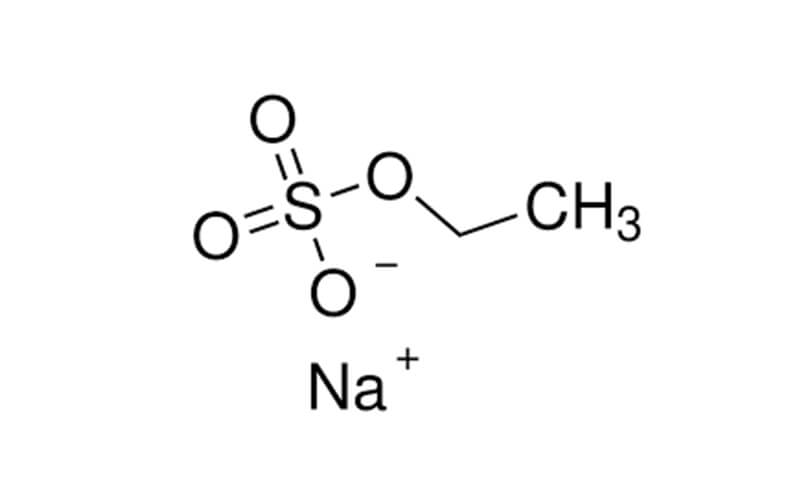anhydrous sodium sulfate molecular weight
What is Anhydrous Sodium Sulfate?
Anhydrous sodium sulfate is a versatile chemical compound widely used across various industries. It’s an inorganic compound with unique properties that make it essential for manufacturing, chemical processing, and even laboratory research. Known for its efficiency in absorbing water, its application goes far beyond just being a drying agent. Let’s dive into its chemical structure, industrial uses, and defining characteristics.
Chemical Composition and Formula
Anhydrous sodium sulfate, chemically represented as Na₂SO₄, has a straightforward yet remarkable molecular structure. It’s made up of two sodium (Na) ions and one sulfate (SO₄) ion. This ionic compound is stable, odorless, and appears as a white crystalline solid. The molecular weight of anhydrous sodium sulfate is 142.04 g/mol, a critical figure for calculating concentrations and formulations in both industrial and lab settings.
To view more in-depth details about its molecular composition, check out this comprehensive resource on Sodium Sulfate from PubChem.
Applications in Industries
Anhydrous sodium sulfate is a jack-of-all-trades in the world of industrial chemicals. Its various features make it indispensable in a range of applications:
- Detergents: Sodium sulfate acts as a filler in powdered laundry detergents. It improves flowability and ensures even distribution of active ingredients.
- Glass Manufacturing: It helps in removing small air bubbles from molten glass, enhancing the clarity and quality of the final product.
- Textile Industry: Sodium sulfate aids in dyeing and printing processes. It keeps dyes evenly distributed across fabrics, leading to vibrant and consistent colors.
- Paper Production: In the Kraft process, it plays a role in the pulping phase, enabling the creation of durable and high-quality paper.
- Pharmaceuticals: It can serve as an inert carrier for testing or as part of certain formulations.
For a broader explanation, explore this article on Anhydrous Sodium Sulfate Applications.
Physical and Chemical Properties
The unique physical and chemical properties of anhydrous sodium sulfate make it stand out among other inorganic salts:
- Appearance: It is a white, crystalline solid.
- Solubility: Highly soluble in water, with a solubility that increases with temperature.
- pH: When dissolved in water, it creates a neutral to slightly alkaline solution (pH ~7 to 9).
- Melting and Boiling Points: It melts at 884°C (1,623°F) and boils at 1,429°C (2,604°F).
Its thermal stability is particularly beneficial in high-temperature industrial processes, where it maintains its structural integrity.
More technical details and in-depth specifications can be found on the American Elements Sodium Sulfate Anhydrous page.
Anhydrous sodium sulfate’s combination of simplicity and functionality makes it one of the most widely relied upon compounds in modern industry. Its chemical stability and adaptability ensure its usage will remain relevant for years to come.
Calculating the Molecular Weight of Anhydrous Sodium Sulfate
The molecular weight of a compound is essential in chemistry. It’s used to measure how much of a substance is present, whether in a lab setting or for large-scale industrial applications. For anhydrous sodium sulfate (Na₂SO₄), determining its molecular weight helps in ensuring accuracy and consistency in experiments and manufacturing processes. Here’s how you can calculate it and why it’s crucial.
Understanding Atomic Mass Units
Every element in the periodic table has a specific atomic mass unit (amu), which is a standard way to express the mass of an atom. It’s based on a scale where one amu equals one-twelfth the mass of a carbon-12 atom. Why is this important? It simplifies calculations and provides a consistent way to measure the weight of molecules.
When calculating molecular weights, the atomic masses are expressed in grams per mole (g/mol). For example, sodium (Na) has an atomic mass of 22.99 g/mol, sulfur (S) has 32.06 g/mol, and oxygen (O) has 16.00 g/mol. For a deeper understanding of atomic masses, check out this guide on atomic mass.
Step-by-Step Calculation for Na₂SO₄
Breaking it into steps makes calculating the molecular weight of Na₂SO₄ straightforward. Each step ensures you fully understand how each component contributes to the molecule’s overall mass.
- Determine the Molecular Formula: Sodium sulfate has the chemical formula Na₂SO₄.
- Find Atomic Masses from the Periodic Table:
- Sodium (Na): 22.99 g/mol
- Sulfur (S): 32.06 g/mol
- Oxygen (O): 16.00 g/mol
- Account for the Number of Atoms in Each Element:
- Sodium: 2 atoms × 22.99 g/mol = 45.98 g/mol
- Sulfur: 1 atom × 32.06 g/mol = 32.06 g/mol
- Oxygen: 4 atoms × 16.00 g/mol = 64.00 g/mol
- Add It All Up:
- 45.98 + 32.06 + 64.00 = 142.04 g/mol
This total, 142.04 g/mol, is the molecular weight of anhydrous sodium sulfate. If you’d like to explore more examples or compare calculations, check this tool for Na₂SO₄ molecular mass.

Verification and Practical Importance
Double-checking calculations is a step no chemist should skip. Minor errors in molecular weight can lead to inaccurate results, especially in sensitive lab experiments or industrial processes involving large quantities of chemicals. Imagine measuring ingredients for a recipe but misreading one measurement—your final product could turn out completely wrong.
In the lab, verifying molecular weight ensures that chemical reactions use the correct ratios. For industry, precise molecular weights impact product quality and cost-efficiency. In pharmaceuticals, for example, slight miscalculations could compromise drug safety and effectiveness. To understand why accuracy matters, this article on the importance of molecular weight testing provides excellent insights.
In short, accuracy in molecular weight determination isn’t just a tedious task—it’s foundational for success across multiple scientific and industrial fields. Understanding and applying this in real-world contexts will always lead to better results.






